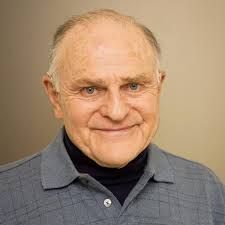Freudian Psychology
“Freud’s Last Session": Theory, Suffering, and Humanity
Personal Perspective: An imagined meeting poses big questions.
Updated February 9, 2024 Reviewed by Kaja Perina

“Freud’s Last Session,” directed by Matthew Brown and starring Anthony Hopkins as Sigmund Freud and Matthew Goode as C.S. Lewis, is a period piece set in 1939 London, just as Britain is threatened by Nazi Germany. Based on a two-person stage play by Mark St. Germain, which won the 2011 Off-Broadway Alliance Award for Best Play, it imagines a possible encounter between Freud and Lewis as humans and thinkers.
The film sees them debating between reason and the existence of God, with the very real backdrop of war, suffering, and disconnections around them. It might be of keenest interest to those interested in psychoanalysis, Christian theology, or the lives of these two men. I liked the cinematography, which reminded me of moody Old Masters oil paintings, and I enjoyed the acting. The film humanizes Freud and Lewis, but also had me rolling my eyes and wincing at analytic concepts and techniques which are revered as gospel to this day.
If you’re interested in Freud on film, you might want to also check out “A Dangerous Method” (my review in references), which portrays Freud and Jung. If you’re interested in the evolution of therapy, I highly recommend “Yalom’s Cure: A Guide to Happiness” available on Kanopy. I found Yalom’s approach most like my own, and in the film, he says his years of psychoanalysis and psychoanalytic training were “a waste of time.” Take that, Siggy!
Freud in this film, like the Freud in “A Dangerous Method” seems quite conscious of being and needing to be a “great man,” and perhaps favoring authority over humility, assertion over reception, certainty of theory over uncertainties in relatedness. He’s rubbed elbows with Einstein, essentially founded an entire profession, and set in motion what has been called a “Copernican revolution” in psychology.
Analysis names important concepts, like the unconscious, transference (which I prefer to think of as a transmission), and boundaries, and is one route to naming, understanding, and validating difficult emotional states. Freud and Freudian analysis have stalwarts, defenders, and detractors to this day. Janet Malcolm in her classic book Psychoanalysis: The Impossible Profession described intramural disputes in psychoanalysis in which those who differed with classic Freudian psychoanalytic theory were accused of having Oedipal complexes about Freud, and long-running debates in analytic schools between relatedness and compassion versus distance and austerity.
I am actually really glad I didn’t study analytic theory in depth before I started working with patients and entering my own therapy. I learned to think and feel for myself, rather than adhere to a “school.” People are different from theory, and I really find Freud’s “model” of human psychology and the classic psychoanalytic techniques he promoted often quite problematic and unhelpful. And yet, many trainees are turning to psychoanalytic education to do depth work, and look to analysis as the holy grail of the inner life.
There have been important revisions in terms of cultural and “relational” analysis, and I’ve appreciated learning from analysts working with narcissism, borderline personality disorders, racism, colonialism, and even love. I’ve met many fine, warm, collegial analysts, and I’m sure most are doing their best to help their patients. But my conclusion so far is that analysis, at best, is far better at deconstruction than reconstruction and repair.
Analysis has made fine contributions to the understanding the origins of psychological suffering in early childhood experiences — but there’s a whole lot more to it than that, and not all analysts are prepared to go there. Some analysts operate from a critical and not compassionate perspective. Some analysts are quite narcissistic themselves and, not infrequently, they inhabit institutions where they promote being “right” rather than related. Some are more comfortable in their heads rather than their hearts.
Many analysts seem to favor an evocative and cerebral absence and abstinence, allowing patients to flounder, but perhaps also to explore their needs, belongings, fantasies, and wishes. Some, like Orna Guralnik in Showtime’s “Couples Therapy” are adept at unearthing childhood trauma and, from a power position, creating the conditions for catharsis. (See my review of her show in references.) The 2023 Holmes Commission report (in references) revealed that analysts and analytic institutions have great difficulty dealing with racialized experiences, racism, and racial enactments. Freudian analysis and psychiatry famously failed to understand and pathologized homosexuality until the 1970s.

I favor relational cultural theory, whose central insight is that “suffering is a crisis in connection, and the opposite of suffering is belonging.” I’ve written that even affects (emotional experiences) need belonging – meaning validation, understanding, and comforting, even as the patient becomes more aware of their own inner life. Patients often come to us with inherent self-worth and relatedness eroded, and need support and growth in these areas. Yet analysis can become pathologizing, instead of humanizing. Indeed, in the film Freud delivers cutting “analyses” off-the-cuff which seemed horribly cruel and unnecessary. After making a grand interpretation, he was fond of lighting a cigar in celebration. One of own mentors, Seymour Boorstein, was classically trained as an analyst, but he always told me "don't add insight to injury; instead of an insight, give them a crust of bread." He would also raise the ire of colleagues by asking in case conferences, "do you like the patient?" He told me that he only later became brave enough to ask "do you love the patient? If you don't love your patient, then the therapy won't work." His words were a reminder for me to work harder at loving and caring for my patients.
Relational cultural theory, and compassion more broadly, recognize shared humanity, even in distressing states or variations in character and personality. But we know best what we treat. In fact, “we are who we treat!” And different people might benefit from different approaches. And most good depth therapists can modify their approach based on their patients’ needs. Most important is learning from our patients — retaining a “beginner’s mind” to see the world through their eyes and relating to them thoughtfully, compassionately, and knowledgeably; not as “problems to be solved,” or as completely separate individuals constructed only of their personal life history (a stereotypical analytic view), but people to be cherished in some way, who exist in a broader cultural and historical context, and who need us to be there for them. As humans, we make each other special with our time and attention.
Therapy and analysis deal with human suffering — and there’s a lot of it. “Freud’s Last Session” gets most real and poignant where we see Freud dealing with his own pain and in need of aid from his daughter, doctors, pain medications, and even Lewis. He is perhaps most helpful to Lewis when Lewis experiences a flashback of being in the trenches in WWI. He is really there for him. Anna Freud (Liv Lisa Fries) is pathologized for her love of her father, and her love of another woman. Freud seems to blame himself for her lesbian identity. Their fraught relationship of intimacy, power imbalance, confused relatedness, unmet needs, and disconnection speaks volumes about "what analysis hath wrought" so to speak.
All these people lean on each other in a time when conflict and war threaten them all. And perhaps Lewis’s God is a manifestation of his needs for order, values, meaning, and to be cared for, as Freud would have it – or an experience of awe and mysterious connections that gave him faith and hope in trying personal and cultural times. In any case, Lewis lives between concrete and emotional reality, and his theory of God, and Freud lives between his theory of psychic suffering and actual relationships with other human beings. In both men we see imperfect attempts to make sense of the world and the hope that, in making sense of it, we might somehow either tame suffering or inspire others to look more closely at it.
Psychotherapy has advanced far beyond the reckonings of Freud. Neurobiology, social psychology, cultural psychology, as well as the science of mind offer great possibilities for the relief of suffering. But technology, human isolation, and profoundly interdependent global stimuli and crises make for a dangerous stew of possibilities. You don’t need to be an analyst to recognize we need to affirm and cultivate our better angels of reason, compassion, and shared humanity to transform our predicament to possibility, our suffering into belonging, our paths apart into reunion.
© 2024 Ravi Chandra, M.D., D.F.A.P.A.
References
Chandra R. A Dangerous Method: Relationships, Sexuality, Ideas and Ego | Psychology Today, December 27, 2011
Chandra R. MOSF 17.6: Orna Guralnick, Showtime’s “Couples Therapy”, and the White Savior Complex. East Wind eZine, May 4, 2022
Holmes Commission Report on Racial Equality. American Psychoanalytic Association. June 19, 2023




